The Nanking Massacre or Nanjing Massacre, also known as the Rape of Nanking, is a mass murder and war rape that occurred during the six-week period following the Japanese capture of the city of Nanjing (Nanking), the former capital of the Republic of China, on December 13, 1937 during the Second Sino-Japanese War. During this period, hundreds of thousands of Chinese civilians and disarmed soldiers were murdered and 20,000–80,000 women were raped by soldiers of the Imperial Japanese Army.
A group of foreign expatriates headed by John Rabe had formed the 15-man International Committee on November 22 and mapped out the Nanking Safety Zone in order to safeguard civilians in the city, where the population numbered from 200,000 to 250,000. Rabe and American missionary Lewis S. C. Smythe, secretary of the International Committee and a professor of sociology at the University of Nanking, recorded the actions of the Japanese troops and filed complaints to the Japanese embassy.
Japanese tanks enter Nanking
The International Military Tribunal for the Far East estimated that 20,000 women were raped, including infants and the elderly. A large portion of these rapes were systematized in a process where soldiers would search door-to-door for young girls, with many women taken captive and gang raped. The women were often killed immediately after the rape, often through explicit mutilation or by stabbing a bayonet, long stick of bamboo, or other objects into the vagina.
On 19 December 1937, Reverend James M. McCallum wrote in his diary:
I know not where to end. Never I have heard or read such brutality. Rape! Rape! Rape! We estimate at least 1,000 cases a night, and many by day. In case of resistance or anything that seems like disapproval, there is a bayonet stab or a bullet ... People are hysterical ... Women are being carried off every morning, afternoon and evening. The whole Japanese army seems to be free to go and come as it pleases, and to do whatever it pleases.
On March 7, 1938, Robert O. Wilson, a surgeon at the American-administered University Hospital in the Safety Zone, wrote in a letter to his family, "a conservative estimate of people slaughtered in cold blood is somewhere about 100,000, including of course thousands of soldiers that had thrown down their arms".
Here are two excerpts from his letters of 15 and 18 December 1937 to his family:
The slaughter of civilians is appalling. I could go on for pages telling of cases of rape and brutality almost beyond belief. Two bayoneted corpses are the only survivors of seven street cleaners who were sitting in their headquarters when Japanese soldiers came in without warning or reason and killed five of their number and wounded the two that found their way to the hospital.Let me recount some instances occurring in the last two days. Last night the house of one of the Chinese staff members of the university was broken into and two of the women, his relatives, were raped. Two girls, about 16, were raped to death in one of the refugee camps. In the University Middle School where there are 8,000 people the Japs came in ten times last night, over the wall, stole food, clothing, and raped until they were satisfied. They bayoneted one little boy of eight who have [sic] five bayonet wounds including one that penetrated his stomach, a portion of omentum was outside the abdomen. I think he will live.
In his diary kept during the aggression to the city and its occupation by the Imperial Japanese Army, the leader of the Safety Zone, John Rabe, wrote many comments about Japanese atrocities. For the 17th December:
Two Japanese soldiers have climbed over the garden wall and are about to break into our house. When I appear they give the excuse that they saw two Chinese soldiers climb over the wall. When I show them my party badge, they return the same way. In one of the houses in the narrow street behind my garden wall, a woman was raped, and then wounded in the neck with a bayonet. I managed to get an ambulance so we can take her to Kulou Hospital ... Last night up to 1,000 women and girls are said to have been raped, about 100 girls at Ginling College Girls alone. You hear nothing but rape. If husbands or brothers intervene, they're shot. What you hear and see on all sides is the brutality and bestiality of the Japanese soldiers.
There are also accounts of Japanese troops forcing families to commit acts of incest. Sons were forced to rape their mothers, fathers were forced to rape daughters. One pregnant woman who was gang-raped by Japanese soldiers gave birth only a few hours later; although the baby appeared to be physically unharmed (Robert B. Edgerton, Warriors of the Rising Sun). Monks who had declared a life of celibacy were also forced to rape women.
On 13 December 1937, John Rabe wrote in his diary:
It is not until we tour the city that we learn the extent of destruction. We come across corpses every 100 to 200 yards. The bodies of civilians that I examined had bullet holes in their backs. These people had presumably been fleeing and were shot from behind. The Japanese march through the city in groups of ten to twenty soldiers and loot the shops (...) I watched with my own eyes as they looted the café of our German baker Herr Kiessling. Hempel's hotel was broken into as well, as almost every shop on Chung Shang and Taiping Road.
On 10 February 1938, Legation Secretary of the German Embassy, Rosen, wrote to his Foreign Ministry about a film made in December by Reverend John Magee to recommend its purchase. Here is an excerpt from his letter and a description of some of its shots, kept in the Political Archives of the Foreign Ministry in Berlin.
During the Japanese reign of terror in Nanking – which, by the way, continues to this day to a considerable degree – the Reverend John Magee, a member of the American Episcopal Church Mission who has been here for almost a quarter of a century, took motion pictures that eloquently bear witness to the atrocities committed by the Japanese .... One will have to wait and see whether the highest officers in the Japanese army succeed, as they have indicated, in stopping the activities of their troops, which continue even today.On December 13, about 30 soldiers came to a Chinese house at #5 Hsing Lu Koo in the southeastern part of Nanking, and demanded entrance. The door was open by the landlord, a Mohammedan named Ha. They killed him immediately with a revolver and also Mrs. Ha, who knelt before them after Ha's death, begging them not to kill anyone else. Mrs. Ha asked them why they killed her husband and they shot her. Mrs. Hsia was dragged out from under a table in the guest hall where she had tried to hide with her 1 year old baby. After being stripped and raped by one or more men, she was bayoneted in the chest, and then had a bottle thrust into her vagina. The baby was killed with a bayonet. Some soldiers then went to the next room, where Mrs. Hsia's parents, aged 76 and 74, and. The soldiers killed her with a revolver. The grandfather grasped the body of his wife and was killed. The two girls were then stripped, the elder being raped by 2–3 men, and the younger by 3. The older girl was stabbed afterwards and a cane was rammed in her vagina. The younger girl was bayoneted also but was spared the horrible treatment that had been meted out to her sister and mother. The soldiers then bayoneted another sister of between 7–8, who was also in the room. The last murders in the house were of Ha's two children, aged 4 and 2 respectively. The older was bayoneted and the younger split down through the head with a sword.
Pregnant women were a target of murder, as they would often be bayoneted in the stomach, sometimes after rape. Tang Junshan, survivor and witness to one of the Japanese army’s systematic mass killings, testified:
The seventh and last person in the first row was a pregnant woman. The soldier thought he might as well rape her before killing her, so he pulled her out of the group to a spot about ten meters away. As he was trying to rape her, the woman resisted fiercely ... The soldier abruptly stabbed her in the belly with a bayonet. She gave a final scream as her intestines spilled out. Then the soldier stabbed the fetus, with its umbilical cord clearly visible, and tossed it aside.
According to Navy veteran Sho Mitani, «The Army used a trumpet sound that meant "Kill all Chinese who run away"». Thousands were led away and mass-executed in an excavation known as the "Ten-Thousand-Corpse Ditch", a trench measuring about 300m long and 5m wide. Since records were not kept, estimates regarding the number of victims buried in the ditch range from 4,000 to 20,000. However, most scholars and historians consider the number to be more than 12,000 victims.
On August 6, 1937, Hirohito had personally ratified his army's proposition to remove the constraints of international law on the treatment of Chinese prisoners. This directive also advised staff officers to stop using the term "prisoner of war".
Immediately after the fall of the city, Japanese troops embarked on a determined search for former soldiers, in which thousands of young men were captured. Many were taken to the Yangtze River, where they were machine-gunned. What was probably the single largest massacre of Chinese troops occurred along the banks of the Yangtze River on December 18 in what is called the Straw String Gorge Massacre. Japanese soldiers took most of the morning tying all of the POWs hands together and in the dusk divided them into 4 columns, and opened fire at them. Unable to escape, the POWs could only scream and thrash in desperation. It took an hour for the sounds of death to stop, and even longer for the Japanese to bayonet each individual. Most were dumped into the Yangtze. It is estimated that at least 57,500 Chinese POWs were killed.
The Japanese troops gathered 1,300 Chinese soldiers and civilians at Taiping Gate and killed them. The victims were blown up with landmines, then doused with petrol before being set on fire. Those that were left alive afterward were killed with bayonets.
F. Tillman Durdin and Archibald Steele, American news correspondents, reported that they had seen bodies of killed Chinese soldiers forming mounds six feet high at the Nanking Yijiang gate in the north. Durdin, who was working for the New York Times, made a tour of Nanking before his departure from the city. He heard waves of machine-gun fire and witnessed the Japanese soldiers gun down some two hundred Chinese within ten minutes. Two days later, in his report to the New York Times, he stated that the alleys and street were filled with civilian bodies, including women and children.
According to a testimony made by missionary Ralph L. Phillips to the U.S. State Assembly Investigating Committee, he was "forced to watch while the Japs disembowled a Chinese soldier" and "roasted his heart and liver and ate them"
The Battle of Nanking ended on December 13, when the divisions of the Japanese Army entered the walled city of Nanking. The Tokyo War Crime Tribunal defined the period of the massacre to the ensuing six weeks. More conservative estimates say the massacre started on December 14, when the troops entered the Safety Zone, and that it lasted for six weeks.
VODEO: BLACK SUN MASSACRE
Chinese being buried alive
Please note that there are many more images available on the rape and massacre that occurred at Nanking. We have shunned showing the more graphic images on this site. They can be viewed at Nanking-massacre.com


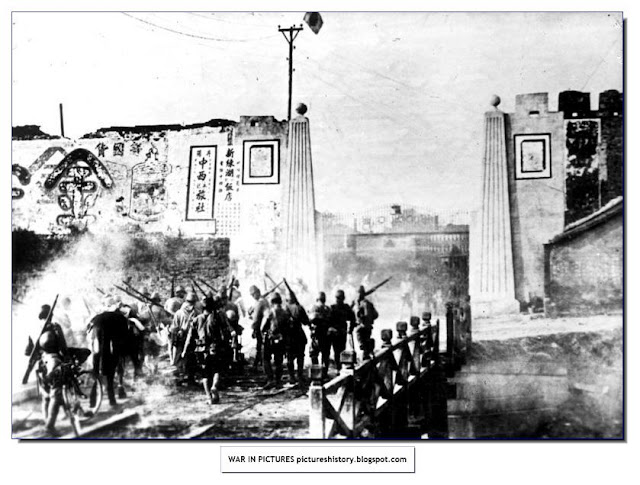
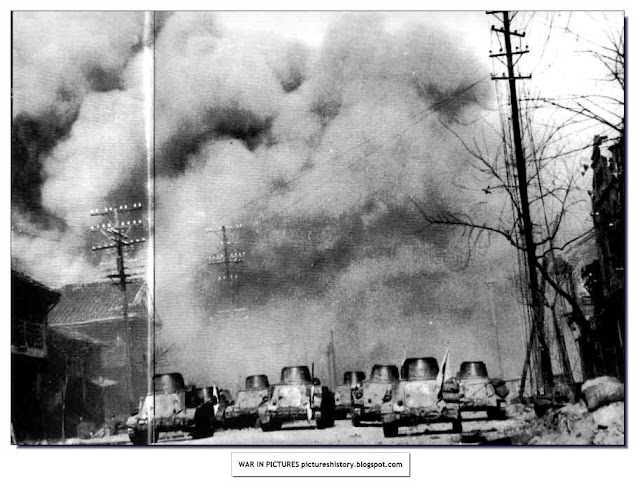
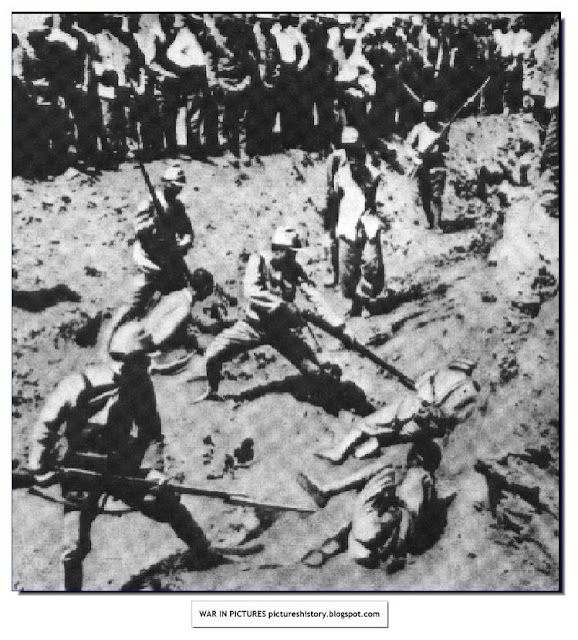

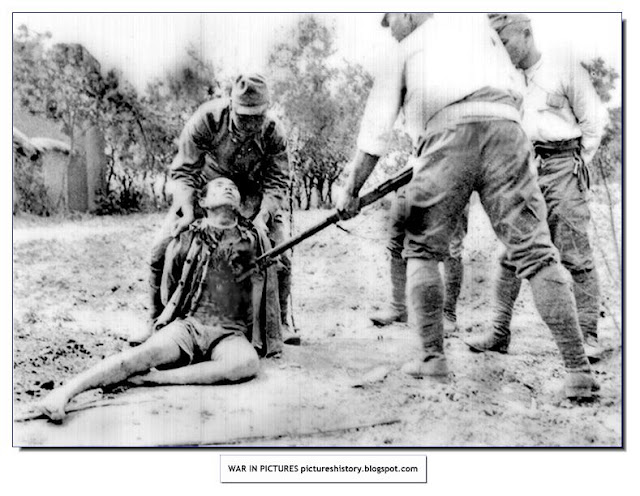

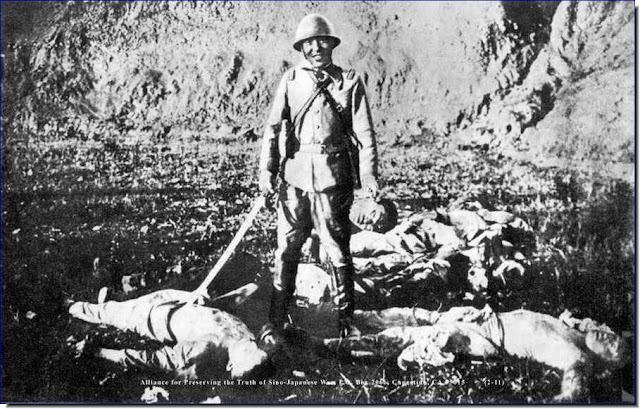


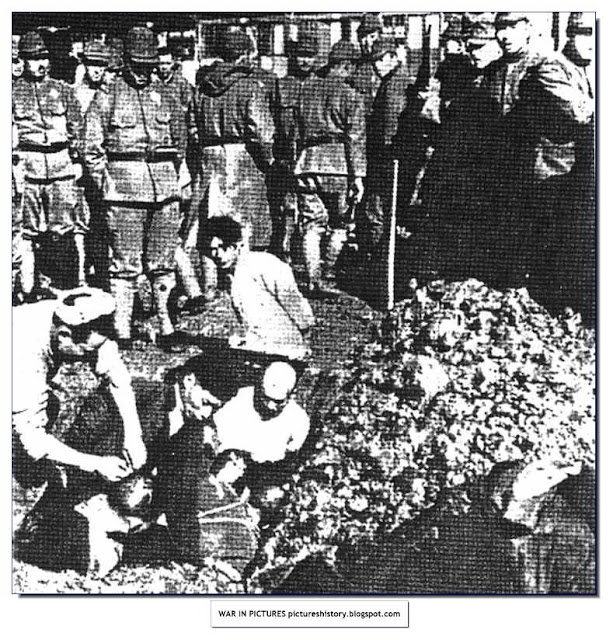

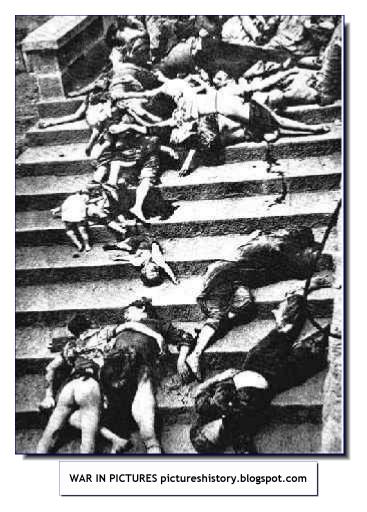


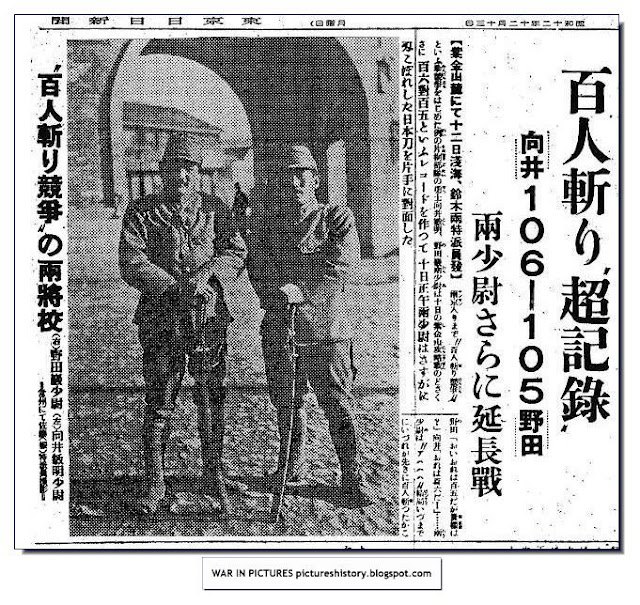




































0 Comments:
Post a Comment